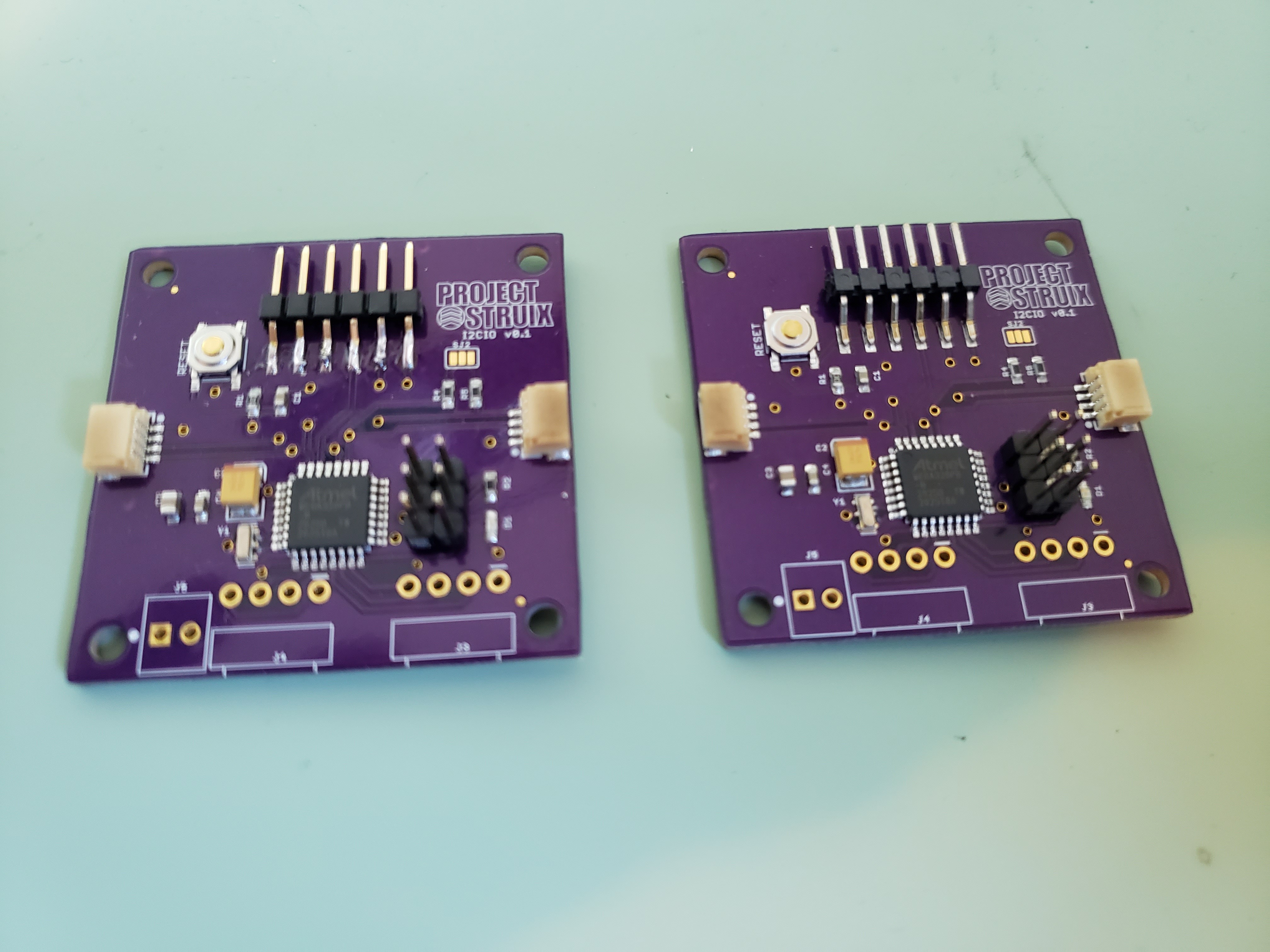-
First Code Example
11/21/2020 at 01:38 • 0 commentsA Phillips/NXP PCF8574 8-bit I2C bus digital I/O expander emulator.
Finally! After a project hiatus, the first example code is uploaded to GitHub.
https://github.com/mdlougheed/I2CIO_PCF8574
This example code will use the I2CIO to emulate an 8-bit I2C digital I/O expander. Other I/O expanders, such as the TITCA9534.
The main idea with this code was to show how to set up a basic I2C receiver device. Other device possibilities are a sensor preprocessor to reduce raw data to a usable form, offloading that task from the controller device. How about an I2C connected fault tolerant co-processor array. Or maybe an SD card storage system accessible through I2C. The possibilities are endless.
-
Built two more I2C-IO & Bootloader Instructions
11/08/2020 at 20:36 • 0 commentsWith the success of the first build, I finished stuffing and IR soldering two more I2C-IO. After programming and verifying the setup for Arduino, I'll hand solder the MOLEX right angle connectors and the terminal block used as a the external ground connection.
![]()
Notes to self on future builds:
- Use the black version of the JST (SM04B-SRSS-TB) "SH" series connectors used for the QWIIC I2C. The natural color tends to age and look a bit "roasty" from the exposure to IR in my SMD oven - even with Kapton tape. It's purely a cosmetic issue.
- Re-source and continue using the SAMTEC 6-position right-angle SMD connection headers with PCB locator pins. I used the last of those I had on-hand for the unit shown on the right in the above photo. The Harwin version (M20-8890645) without the locator pins will work in a pinch, however I like the finish I get by being able to solder in the oven. Takes the variability away from having to hand-solder.
I used an Atmel JTAG ICE-3 to program the 328PB's with the Arduino bootloader using Atmel Studio 7.- Fuse settings are those used for the LilyPad Arduino board:
low_fuses=0xFF
high_fuses=0xDA
extended_fuses=0x05
- Bootloader (Found in the Arduino hardware files --> \hardware\arduino\avr\bootloaders\atmega)
ATmegaBOOT_168_atmega328_pro_8MHz.hex
That pretty well does it to program the board in Arduino.
- Use the black version of the JST (SM04B-SRSS-TB) "SH" series connectors used for the QWIIC I2C. The natural color tends to age and look a bit "roasty" from the exposure to IR in my SMD oven - even with Kapton tape. It's purely a cosmetic issue.
-
I2CIO Prototype v0.1
10/09/2020 at 20:56 • 0 commentsI2CIO Prototype is complete. Eagle files posted.
I2C device example code will be published on Github
I2C-IO
A simple I2C connected microcontroller for real-world interfacing, distributed computing and edge-style data processing
